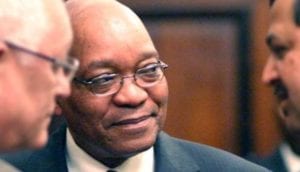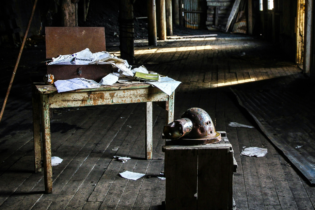A call for national unity accompanied the presentation of the massive infrastructural spending the presidency will coordinate over the next few years.
In his address to the presidential infrastructure investment conference in Sandton on Friday, President Jacob Zuma quoted former president Nelson Mandelas 1994 inaugural speech: “We know it well that none of us acting alone can achieve success. We must therefore act together as a united people, for national reconciliation, for nation building, for the birth of a new world.” To illustrate national unity, not only were various ministers in attendance, but also representatives from industry, state owned enterprises, banking, investment vehicles and labour. This was considered new: “One radical thing about the project,” said Collins Chabane, minister in the presidency, “Is that we are all here.” An estimated R4-trillion will be spent over the next 15 years on the South African National Infrastructure Plan. The state has budgeted R850-billion over the next few years. The private sector is expected to contribute to spending, while the rest of the funding will be raised on capital markets and from charges levied by state owned enterprises Eskom and Transnet. The Engineering Council of South Africa (Ecsa) has welcomed the initiative. Dr Oswald Franks, chief executive of Ecsa and a delegate at the conference said that while an ambitious project, “It is unprecedented in the history of the country and we think it is a brilliant initiative.” Franks said that in partnership with government, the Ecsa is working on building the engineering capacity of government at all three levels; national, provincial and local. “There has been a flight of skills from municipalities and this has an impact on the maintenance of existing infrastructure and service delivery,” he said. But Franks said the private sector, however, was cautious about the new developments. “Many have had their fingers burned in the past and are sceptical now,” he said. The Presidential Infrastructural Coordinating Committee (PICC) is chaired by the presidency and central coordination is envisioned as addressing existing weaknesses in implementation capacity. “The strength of the plan is the central coordinating committee that I chair,” said Zuma in his address to the conference. The PICC cuts across ministries and the three tiers of government. Ebrahim Patel, minister of industrial development, said the level of under spending the country has seen over the last few years is significant. “One of the challenges we face is to reduce the gap between budgetary and actual spending,” he said. The PICC has tabled a plan for “spatial integration”, a move that speakers considered “radical”. “There is currently a disconnect between high population density and economic opportunity, so that people are moving away from areas they live to areas where they work,” said Patel. “One of the problems is the dominance of Gauteng in the national economy, followed by KwaZulu-Natal and the Western Cape.”Jeremy Cronin, deputy minister of public works, said that the South African state historically only spent on areas that were key economic hubs, and neglected large swathes of the country. To ensure that South Africa is “not locked in a semi-colonial logistics grid”, as Cronin put it, the PICC has demarcated areas in poorer provinces for development spending.
The definitional net for “development” has been cast wide. A key prerogative, according to Patel, involves “unlocking the mineral belt with Waterberg [in Limpopo] as the catalyst”. The minerals still underground that will be tapped into include coal, ironore and manganese. This will necessitate enough energy and transport capacity by rail and by road. “Two of the biggest items budgeted for are energy and transport,” said Patel. The state-owned enterprises Eskom and Transnet are fully on board. Increased procurement from the domestic manufacturing sector is also on the cards. These will include the sourcing of steel, bitumen, cement, and the heavy machinery required for construction. The PICC also has its eyes set on promoting agro-processing in rural areas as well as improving schooling and nursing facilities across the country. According to Franks, whether South Africa had enough skills to handle projects of such magnitude was not a source of concern. “Engineering skills will follow development,” he said. “If we are not able to, foreigners will.” But he said there was no doubt South Africa the construction sector was well equipped and that engineers were on par with the world standard. “But in manufacturing and developing new products, skills are lagging,” he said. This was because South Africa had not put as much emphasis on the sector as other countries had, such as Korea and Japan, he said. Source: http://mg.co.za







